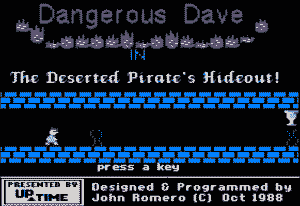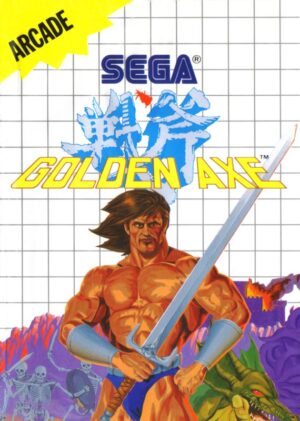Retro Replay Review
Gameplay
Moria offers a deeply strategic, turn-based experience rooted in classic roguelike traditions. From the moment you step into the titular dungeons, every decision matters: will you press forward into unexplored shadows, or retreat to the safety of town to rest and resupply? The game’s multi-screen dungeon levels expand the sense of scale beyond what early roguelikes generally offered, transforming each descent into a sprawling, mysterious labyrinth.
(HEY YOU!! We hope you enjoy! We try not to run ads. So basically, this is a very expensive hobby running this site. Please consider joining us for updates, forums, and more. Network w/ us to make some cash or friends while retro gaming, and you can win some free retro games for posting. Okay, carry on 👍)
Character creation in Moria is both flexible and engaging. You choose your sex and one of eight races—dwarves, elves, humans and more—roll your stats until you achieve a distribution you like, then select from up to six classes such as Warrior, Mage, or Thief. Your choices here shape everything: a high-strength fighter barrels through foes with brute force, while a nimble rogue relies on stealth and traps. This deep customization ensures each playthrough feels unique.
The town level serves as a welcome hub between dungeon forays. Here, you can visit diverse shops to buy armor, weapons, torches, and magical trinkets. The bartering system allows you to negotiate prices with shopkeepers, introducing an element of risk and reward to every purchase. Decisions made in town directly affect your survival deeper below, forcing you to balance gold reserves with essential supplies.
Once inside the randomly generated dungeon levels, you’ll encounter a variety of monsters—from goblins to powerful invisible stalkers—alongside hidden traps and secret doors. Multiple exits per level encourage exploration rather than following a single tunnel. Your goal is clear: descend ever further, amassing treasure and experience, and ultimately confront the dreaded Balrog lurking in the deepest chamber.
Graphics
Moria embraces a text-only, overhead representation common to its era, using ASCII characters to depict walls, creatures, and items. Despite the absence of detailed sprites or textures, the minimalist visuals deliver clarity and immediacy: an “@” denotes your hero, while letters and symbols efficiently convey monsters, treasure, and terrain features.
While some modern players may find ASCII graphics austere, they allow your imagination to fill in the gaps. Color-coded tiles—if supported by your terminal—add visual distinction between hazards and rewards. The multi-screen dungeon layout smoothly scrolls as you move, preserving the feeling of an expansive underground world without resorting to complex rendering.
The graphic simplicity is also a practical strength: performance is instant even on modest hardware, and the open-source codebase has enabled countless ports and community-driven enhancements. Fan-made forks have introduced optional tile sets and enhanced color schemes, giving new life to the classic interface without compromising the original’s timeless charm.
Story
At its narrative core, Moria tasks you with descending into the eponymous subterranean realm to vanquish the Balrog, a powerful demon lurking on the lowest level. Although the game borrows a name from Tolkien’s legendarium, it deliberately avoids other direct references, forging its own mythos centered on dungeon delving and treasure hunting.
Storytelling in Moria is largely emergent. You’ll craft a personal legend as you encounter rare artifacts, stumble upon forgotten vaults, or narrowly evade deadly pitfalls. Item descriptions offer brief flashes of lore—glowing runes, cryptic inscriptions, and hints of ancient civilizations—that reward curious explorers.
Interacting with shopkeepers and reading in-game messages gives occasional narrative texture to your journey. The tension builds with each deeper level: you learn to respect the unpredictable dungeon ecology and the rumor that something truly fearsome waits below. Victory against the Balrog isn’t just a mechanical achievement; it’s the climax of a hero’s saga you write one turn at a time.
Overall Experience
Moria remains a landmark in roguelike history, seamlessly blending character customization, procedural generation, and tactical depth. Its turn-based progression encourages careful planning and adaptation, rewarding players who learn monster behaviors and optimize their equipment. Few titles offer such a pure, unvarnished dungeon-crawling challenge.
Replayability is virtually infinite. Randomly generated levels, variable character builds, and the constant threat of permadeath make every run feel fresh. Whether you’re exploring corridors with a bow-wielding elf or delving through darkness as a heavily armored dwarf, each session tells a different story of risk, resource management, and daring heroics.
Newcomers may face a steep learning curve—text commands and ASCII layouts can feel arcane at first. However, community documentation and a welcoming player base smooth the path to mastery. As you grow familiar with common abbreviations, dungeon shorthand, and combat tactics, the game’s complexity transforms into deeply satisfying strategy.
For fans of classic roguelikes, open-source software, or anyone seeking an uncompromising dungeon crawler, Moria delivers a rich, endlessly engaging experience. Its legacy lives on in countless variants and spiritual successors, yet the original remains a pure example of the genre’s enduring appeal.
 Retro Replay Retro Replay gaming reviews, news, emulation, geek stuff and more!
Retro Replay Retro Replay gaming reviews, news, emulation, geek stuff and more!









Reviews
There are no reviews yet.